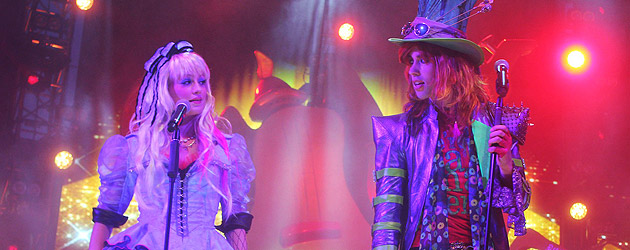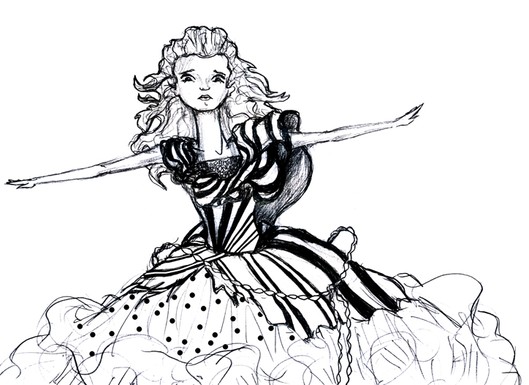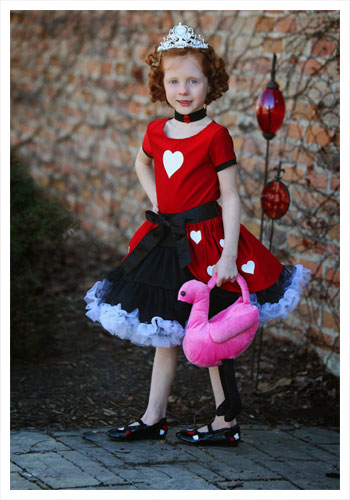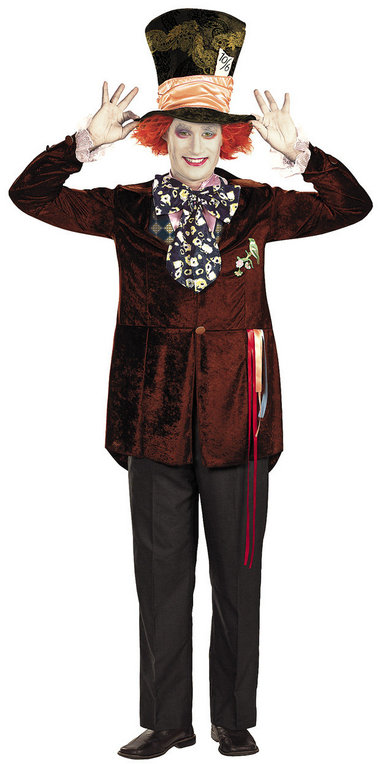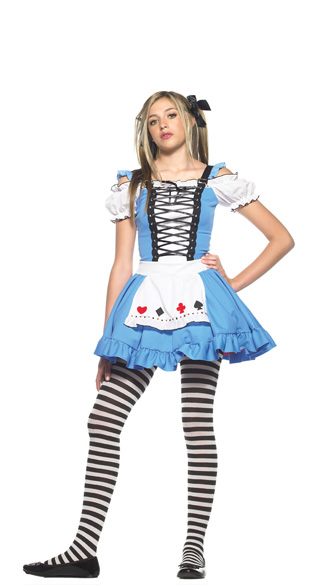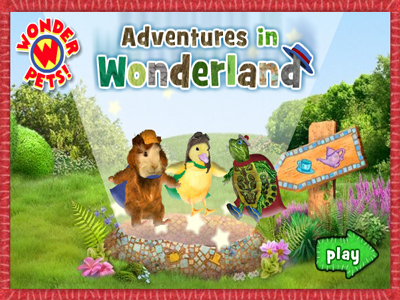Unless you’ve been living in a rabbit hole, you’re probably aware that Tim Burton’s Alice in Wonderland 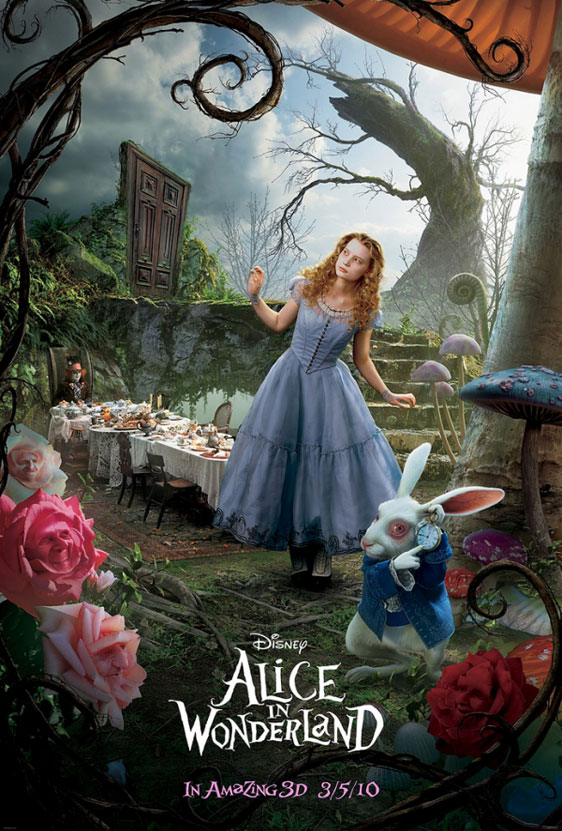 promotion poster for Tim Burton's Alice in Wonderlandopened up this weekend. Its first day ticket sales were more successful than Avatar’s first day. But just because a lot of people go to see a film, doesn’t necessarily mean it’s a great film.
promotion poster for Tim Burton's Alice in Wonderlandopened up this weekend. Its first day ticket sales were more successful than Avatar’s first day. But just because a lot of people go to see a film, doesn’t necessarily mean it’s a great film.
There is an inverse relationship between Tim Burton’s Alice in Wonderland and Lewis Carroll’s Alice’s Adventures in Wonderland: the more you like the Alice books, the more you are probably going to dislike Burton’s film. Obviously, I like the Alice books. That’s not to say films are always inferior to the books on which they’re based. For example, Victor Fleming’s Wizard of Oz film is more effective than L. Frank Baum’s Wonderful Wizard of Oz original novel.
This is not a film version of the Alice books. Instead, key characters from the Alice books appear in the film. It’s a bit like Gavin Miller’s Dreamchild in that an older Alice revists Wonderland. In Dreamchild, it’s an 80-year-old Alice reflecting on the books and her friendship with Lewis Carroll. In the new film, Alice is a fetching, independent 19-year-old contemplating a marriage proposal to a wimpy, titled young man. Unlike Dreamchild, Lewis Carroll is absent in this film and even his usual stand-ins, the Dodo and the White Knight, don’t appear.
I think the film is misnamed and should be called Return to Wonderland. Burton’s Wonderland relates to Carroll’s Alice books in the same way that Walter Murch’s Return to Oz relates to Baum’s Oz series.
What is surprising about this film is how much references previous films. It is a very much a pastiche of similar films, mostly fantasy films. Tim Burton clearly references his previous films, including Nightmare Before Christmas, Edward Scissorhands, Sweeney Todd, Corpse Bride, and Planet of the Apes. The screenwriter, Linda Woolverton has helped with Disney films such as The Lion King and Beauty and the Beast. So, the film dips into Disney references including the opening taken directly from the Disney animated Peter Pan. Johnny Depp’s Mad Hatter is a combination of Peter Pan, the Scarecrow from The Wizard of Oz combined with Jack Sparrow from the Pirates of the Caribbean series and the Joker from Christopher Nolan’s The Dark Night and perhaps Charlie Chaplin.
There are plenty of references to The Wizard of Oz and the Broadway musical Wicked, The Golden Compass, and The Lion, The Witch, and the Wardrobe. The last two films were inspired by the success of The Lord of the Rings, so that’s in here, too. The relationship between the Red and White Queens is borrowed from Wicked. Others have noted reference to The Princess Bride and Shrek. The fighting Dormouse reminded me of The Tales of Despereaux.
Woolverton seems to have acknowledged problems with the script. In fact, a running theme throughout the film is whether this is the ‘right’ Alice. The Wonderland characters frequently ask the White Rabbit if he has brought the wrong Alice back. Is she an imitation Alice? Has she lost her Muchness? She’s not Alice, but Almost Alice. In short, Tim Burton has directed the wrong Alice. I sort of think he knows this because the question of an authentic Alice is an essential aspect of the film.
Alice is warned in this film not to divert herself from the path. Alice replies, I don’t divert myself from the path, I make the path. If you are going to re-write Alice in Wonderland, then you better be as good a writer as Lewis Carroll.
Burton’s film is not as bad as the dreadful The Cat in the Hat by Bo Welch, which featured Mike Meyers as the Cat. But it is not as inventive as the interpretation of Maurice Sendak’s Where the Wild Things Are by Dave Eggers and Spike Jonez.
Mia Wasikowska makes an arresting Alice. But viewers haven’t seen so much skin in Alice since the 1976 X-rated, musical version of Alice in Wonderland. Not only does Tim Burton feature a 20-year-old play Alice, she is constantly on the verge of having her clothes slip off. Sometimes this film feels as if it’s a Maxim version of Alice in Wonderland.
In the beginning of the film, Alice refuses to wear a corset or stocking, which shocks her proper Victorian mother. Once the adventure begins, Alice is running around in flimsy petticoats in a land that’s actually Underland, not Wonderland. Alice’s clothes never quite fit; they are either too tight, too loose, too short, or slipping off completely. This is less Queen Victoria’s Alice and more of a Victoria’s Secret Alice.
Not only does Burton up the sexualization of Alice, but he increases the violence in Wonderland as well. This film transforms a minor episode of Through the Looking-Glass involving the Jabberwocky into the climax of the film. This has become a violent film, as so many children’s fantasy films are these days. They all have to end with a big battle. The original Alice books are much less violent. When the Red Queen says “Off with her head,” the King quietly pardons them. In this film, the King’s head is floating in the moat with the other heads that have been cut off by order of the Red Queen. This is mock execution the way children play. It wasn’t intended to be staged execution viewed with violent lust by the Red Queen, as it is in this film.
There are a several clever additions to the Alice film. Much is done with the Hatter’s meditation on words beginning with the letter M. But a couple of words not mentioned in the film are a fair description of it: messy, major mashup of previous children’s movies, and mayhem. Tweedledum and Tweedledee characters are great. The landscapes are highly imaginative.
I felt the 3-D version seemed somewhat of a distraction to me and unnecessary. Younger audience members seemed to like it. Ironically, Carroll would have been fascinated with 3-D films.
While this is certainly not my favorite Alice film, it is an interesting variation on Carroll’s characters. But as long as it directs some folks back to Lewis Carroll’s original Alice books, it’s fine with me.
 Saturday, July 7, 2012 at 10:32AM
Saturday, July 7, 2012 at 10:32AM 
